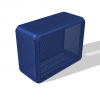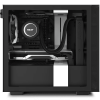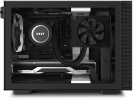Just wanna gather your thoughts and interest on a larger SFF case (target 150-20L) that fits mATX boards. Since mini ITX board prices are getting to ridiculous levels I am thinking maybe this can lower the overall cost of the build. There are also other factors:

15-20L "SFF" PC case design draft features
Oct 2022 - First Draft Designs
1)Boxy Mesh too similar to SSUPD Meshroom D
2) Rounded Corners with mesh panels

- cheaper and more choices mATX boards
- cheaper, more choices, and higher power ATX PSU
- GPUs getting bigger, need a bigger size PC case anyway
- may support 280mm radiator for better cooling
15-20L "SFF" PC case design draft features
- supports mATX (mini DTX & mini ITX)
- supports ATX PSU (shorter form), and SFX, SFX-L
- Orientation - vertical (Meshlicious) or horizontal (Steck) - please suggest
- Internal layout - standard (no riser) or sandwich (need riser) - please suggest
- supports 240 (up to 280mm) radiator
Oct 2022 - First Draft Designs
1)
2) Rounded Corners with mesh panels

Last edited:




